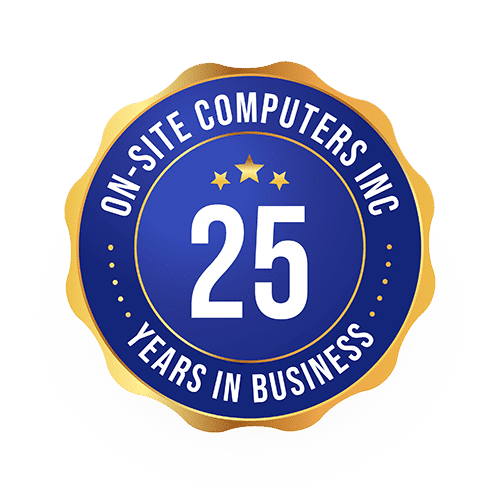
The protection of patient data should be a top priority for health care professionals entrusted with keeping this information safe. As the need to accommodate mobile communication and other advances in technology grow, many care facilities are looking to revamp their outdated system infrastructure into something more flexible.
Businesses inexperienced in overseeing major technology upgrades should seek out the guidance of an MSP that understands the complexities of HIPAA laws and other compliance concerns. A lack of oversight throughout the upgrade process can leave health providers vulnerable to inadvertent exposure of protected patient information. That also leaves them open to having penalties assessed against them for these violations.
MISTAKES MADE BY CARE FACILITIES DURING TECHNOLOGY UPGRADES
Administrators at care facilities often don’t have the technical background to accurately assess the challenges that come with ensuring the technology in their business has the proper protections in place to protect patient data. They must also handle employees who lack training or experience dealing with threats that attempt to access sensitive information.
Mistake #1 – Buying what’s popular, not what’s necessary
It’s easy for an administrator to fall into the trap of going with the most prominent products on the market. They end up not taking the full picture of the business’s needs into account and skip vetting the pros and cons of the technology.
Outcomes
- [icon type=”angle-double-right” class=”fa fa-li accent”]Frustrated end users
- [icon type=”angle-double-right” class=”fa fa-li accent”]Incompatibility with current business tools
- [icon type=”angle-double-right” class=”fa fa-li accent”]Workers not being able to deliver critical business tasks, including top-notch patient care
- [icon type=”angle-double-right” class=”fa fa-li accent”]An exasperated IT team bogged down in constant modifications
Mistake #2 – Not allocating enough spending
Budget concerns can be a big issue among care facilities trying to meet the needs of their patients. For that reason, many administrators try to work with the cheapest solutions they can find which may not work out for them in the long-term.
Outcomes
- [icon type=”angle-double-right” class=”fa fa-li accent”]Workers’ productivity drops because the technology can’t handle their work needs
- [icon type=”angle-double-right” class=”fa fa-li accent”]The tool may not be capable of scaling to fit new and current business requirements
- [icon type=”angle-double-right” class=”fa fa-li accent”]The organization ends up shelling out more money trying to get services to work
Mistake #3 – Failing to follow an implementation plan
Making technology upgrades without a strategy can lead to missed opportunities to improve working conditions, oversight in meeting all regulatory obligations, and incompatibility among various company systems. Applications end up being misconfigured, leaving users confused and frustrated.
Outcomes
- [icon type=”angle-double-right” class=”fa fa-li accent”]Employees end up getting locked out from accessing data necessary to their role
- [icon type=”angle-double-right” class=”fa fa-li accent”]Other users are able to access data they shouldn’t be able to
- [icon type=”angle-double-right” class=”fa fa-li accent”]A care center could end up being out of compliance in various areas
Mistake #4 – Neglecting security concerns
Proper investment in security for IT infrastructure is another area where many care facilities come up short. Administrators can make the mistake of considering their commercial anti-virus product to be adequate security protection. They don’t account for the need to reinforce hardware like their wireless routers and other possible breach points within their systems and software. That leads to a lack of education by workers who may fall for phishing scams that lead to data breaches and HIPAA violations.
Outcomes
- [icon type=”angle-double-right” class=”fa fa-li accent”]Lack of security education among workers
- [icon type=”angle-double-right” class=”fa fa-li accent”]Installation of third-party products vulnerable to breaches
- [icon type=”angle-double-right” class=”fa fa-li accent”]Fines issued by OCR for failing to follow HIPAA standards
Mistake #5 – Lack of end-user input
Administrators can get caught up in the high-level aspects of transitioning to new IT infrastructure without fully accounting for the needs of their workers. What happens when they upgrade to a new database but forget to create specific roles for employees? Or, suddenly present users with a new customer service interface without providing proper training?
Outcomes
- [icon type=”angle-double-right” class=”fa fa-li accent”]Issues with proper recording of essential data
- [icon type=”angle-double-right” class=”fa fa-li accent”]A slowdown in production due to unfamiliarity with a new system
- [icon type=”angle-double-right” class=”fa fa-li accent”]No documentation manuals outlining procedures on handling problems that arise
HOW ON-SITE COMPUTERS AIDS IN TRANSITIONING
On-Site Computers has years of experience guiding care facilities through the process of upgrading their technology infrastructure. We understand the importance of complying with HIPAA laws and making sure companies don’t end up being assessed penalties due to poor network configuration and lax oversight. Our staff can help you avoid HIPAA violations and ensure a smooth technology transition in the following ways.
- Take over security concerns – On-Site Computers removes the burden of security concerns from employees. We check for vulnerable points along your network and within your hardware. Here are some of the ways we can assist.
- Replacing unsecured routers and monitoring their log files
- Installation of anti-virus products suitable for business use
- Documenting security procedures and passing that education on to your employees
- Vetting anyone attempting to access data within your systems
- URL protection
- Design strategies for handling data breaches
- Create an implementation strategy for upgrades – Our staff will evaluate your current set-up and make recommendations on what would work best for your company culture. We can make sure all systems interact as needed and keep you in compliance with all HIPAA laws.
- Find the best solutions for your business – On-Site can show you how investments in specific products, regardless of up-front costs, can result in long-term savings for your company. We support our insights with data, allowing you to understand how your initial cash outlay can benefit the company going forward.
- Proper employee preparation – We will assist your care facility in preparing workers for changes that impact them directly. They won’t be caught off guard and can continue providing the proper care to patients without disruption.
RECEIVE GUIDANCE FROM AN EXPERIENCED MSP
Don’t leave yourself vulnerable to compliance issues because of an improperly handled technology transition. Bring aboard On-Site Computers and help ensure a smooth IT infrastructure upgrade for your care facility. Contact us online today or call us at 800-669-8513 to set up an initial consultation.






